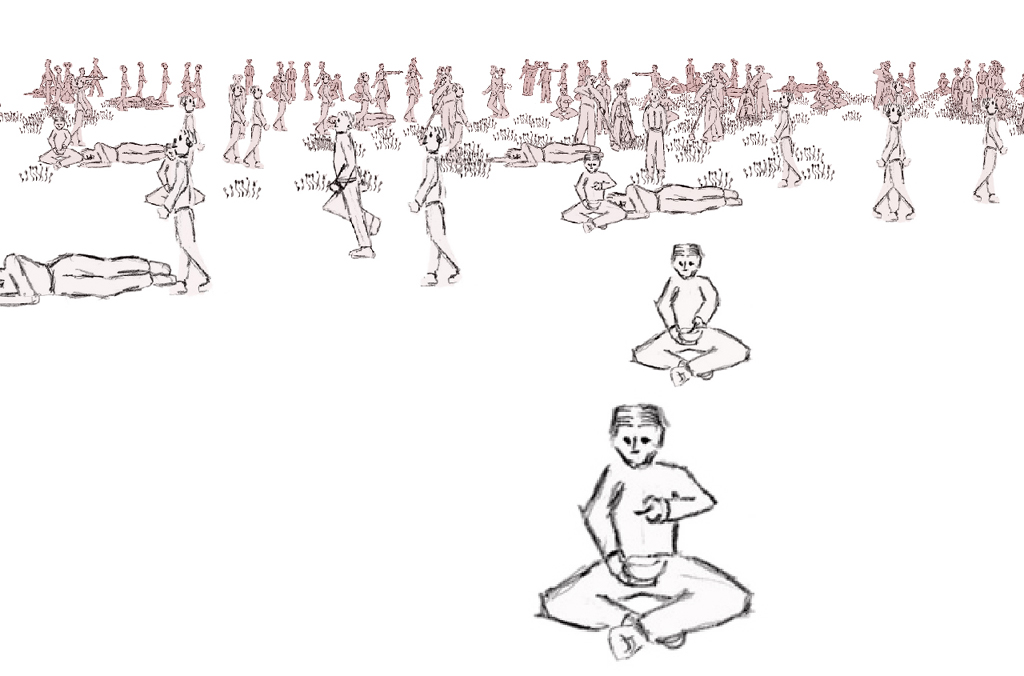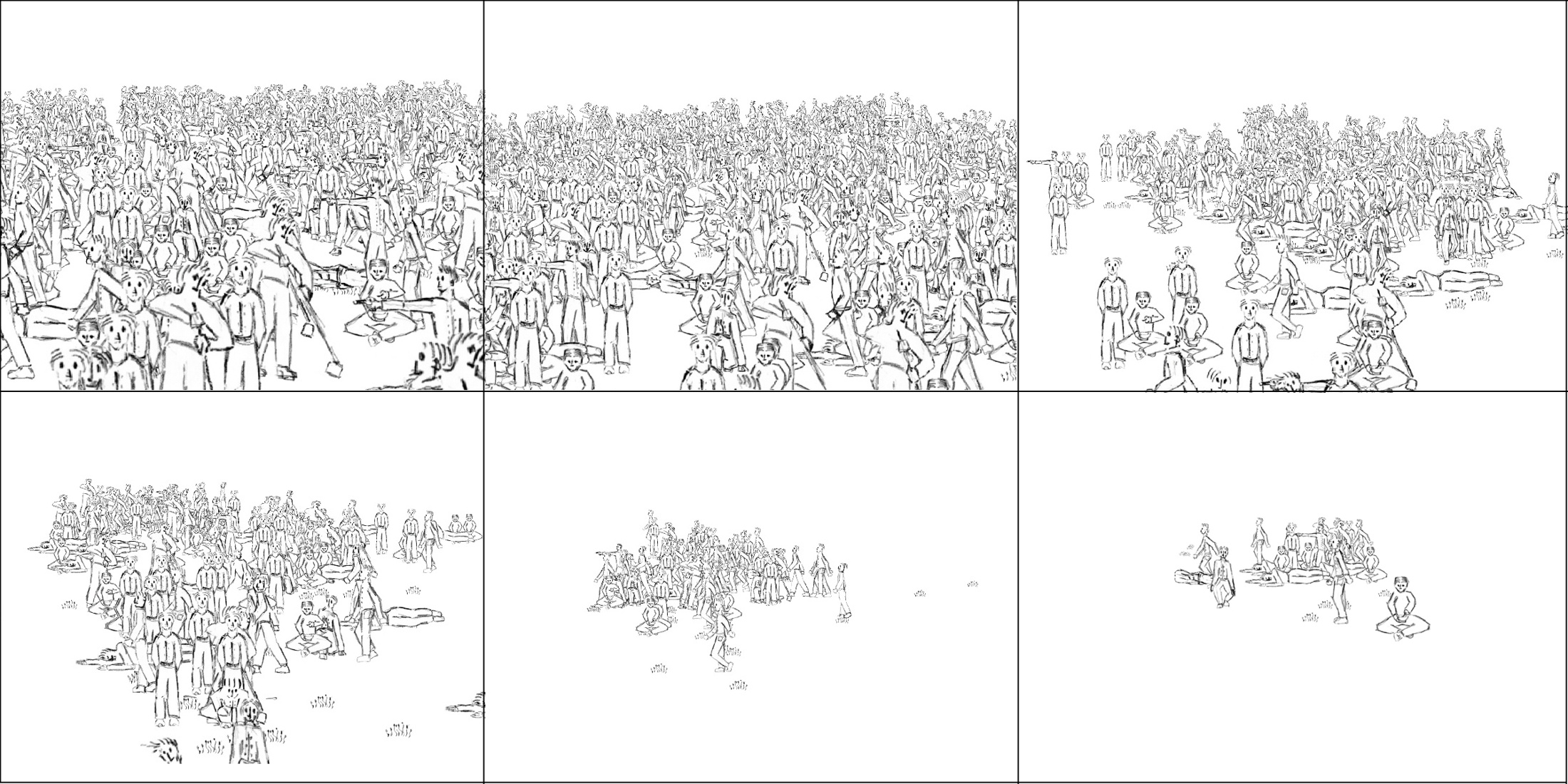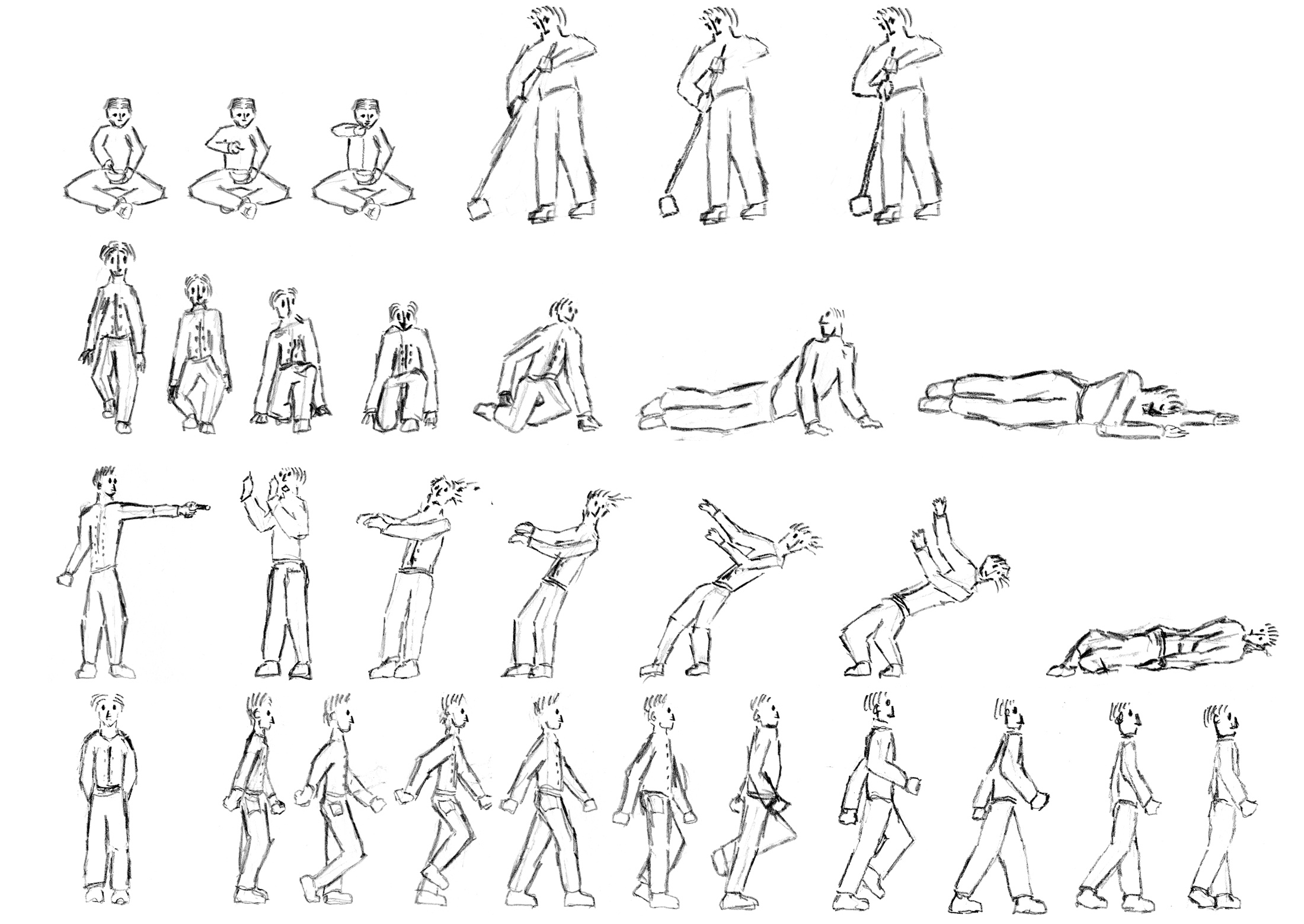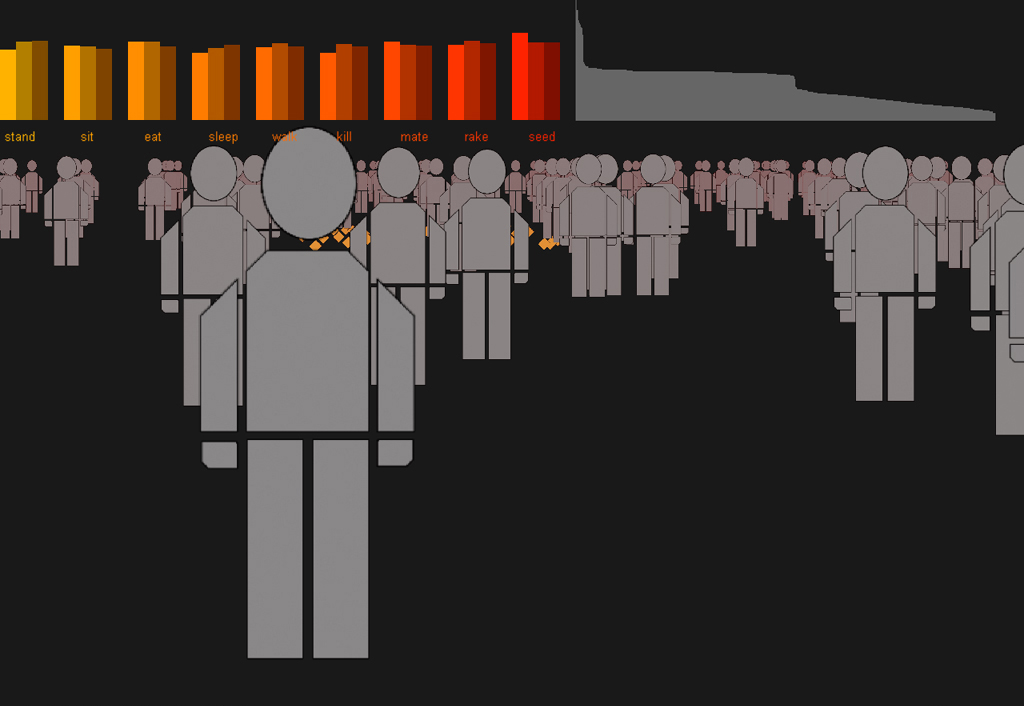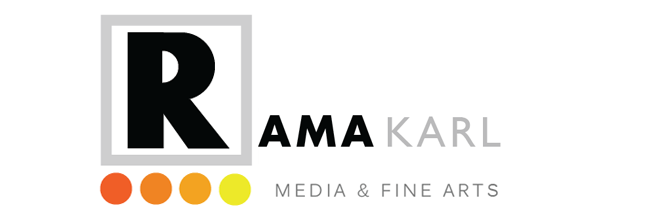SOCIAL EVOLUTION
2005-2008, Rama Hoetzlein
| Exhibited: | 2005, Digital Days Festival at the Arlington Theatre in Santa Barbara |
| Exhibited: | 2006, 2nd Beijing International Arts & Science Exhibition, Tsinghua University, China |
| Exhibited: | 2007, 25th Dorkbot So. Cal, Los Angeles, CA |
| Exhibited: | 2008, Version Beta. Geneve, Switzerland. Oct 31-Dec 15th, 2008 |
ARTWORK
Social Evolution is an experiment in simulated societies. Agents are introduced that engage in a range of actions such as standing, sitting, eating, sleeping, killing, mating, walking, sowing (harvesting) and seeding. New agents are occasionally conceived as offspring with their parameters optimized and carried forward. Agents were first designed and animated as hand drawn sketches, then scanned and converted into animated sprites. Custom software was developed for animation, activity and social evolution.
Surprising outcomes of the project – not pre-programmed – include the ability of the character groups to cluster into towns to conserve energy, local sharing of resources, patterns in which individuals chase one another in circles (3 and 4-way cycles), and social hierarchies similar to caste systems. The last phenomenon is particularly surprising considering that all characters begin as equals. It was found that simulations with land ownership result in 30% of the people owning 95% of the land. These societies exhibit discrete bands of wealth based on second and third order modes of behaviors such as stealing from those who steal. In addition, the poorer individuals were found to cluster in groups around the wealthy despite these disadvantages.
Aesthetically, Social Evolution acts as a mirror for modern society. Exhibited at the final production of the Center for the Contemporary Image in Geneva, Switzerland, this work was displayed in the exterior window in view of commuters passing by on the street, in their vehicles, and on the city tram.

